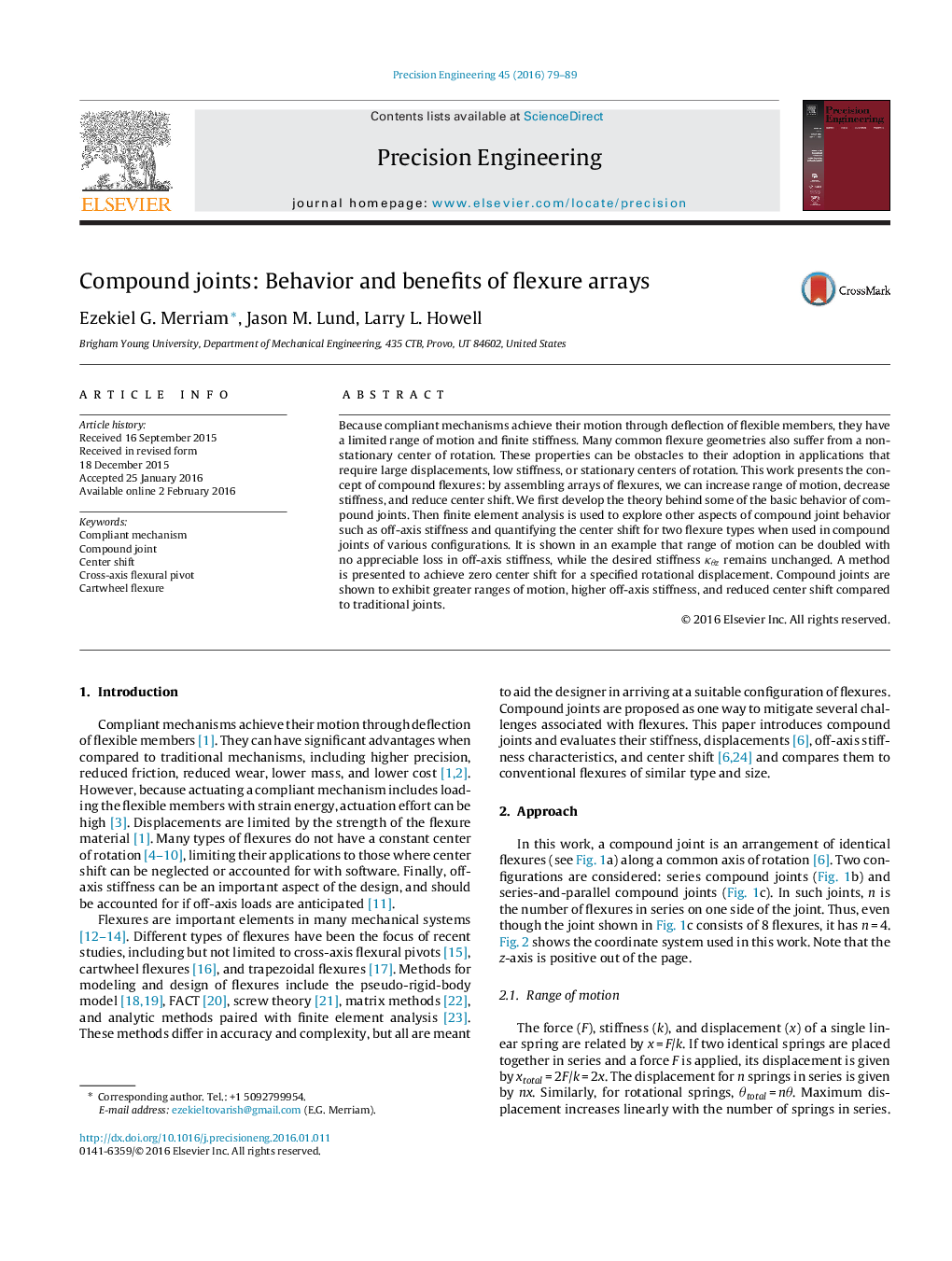| Article ID | Journal | Published Year | Pages | File Type |
|---|---|---|---|---|
| 804408 | Precision Engineering | 2016 | 11 Pages |
•We model arrays of compliant joints in two different configurations.•We evaluate the stiffness of these flexure arrays in 6 degrees of freedom.•We validate our models using experimental results and comparisons with literature.•We demonstrate a method for achieving near-zero center shift using flexure arrays.
Because compliant mechanisms achieve their motion through deflection of flexible members, they have a limited range of motion and finite stiffness. Many common flexure geometries also suffer from a non-stationary center of rotation. These properties can be obstacles to their adoption in applications that require large displacements, low stiffness, or stationary centers of rotation. This work presents the concept of compound flexures: by assembling arrays of flexures, we can increase range of motion, decrease stiffness, and reduce center shift. We first develop the theory behind some of the basic behavior of compound joints. Then finite element analysis is used to explore other aspects of compound joint behavior such as off-axis stiffness and quantifying the center shift for two flexure types when used in compound joints of various configurations. It is shown in an example that range of motion can be doubled with no appreciable loss in off-axis stiffness, while the desired stiffness κθz remains unchanged. A method is presented to achieve zero center shift for a specified rotational displacement. Compound joints are shown to exhibit greater ranges of motion, higher off-axis stiffness, and reduced center shift compared to traditional joints.
